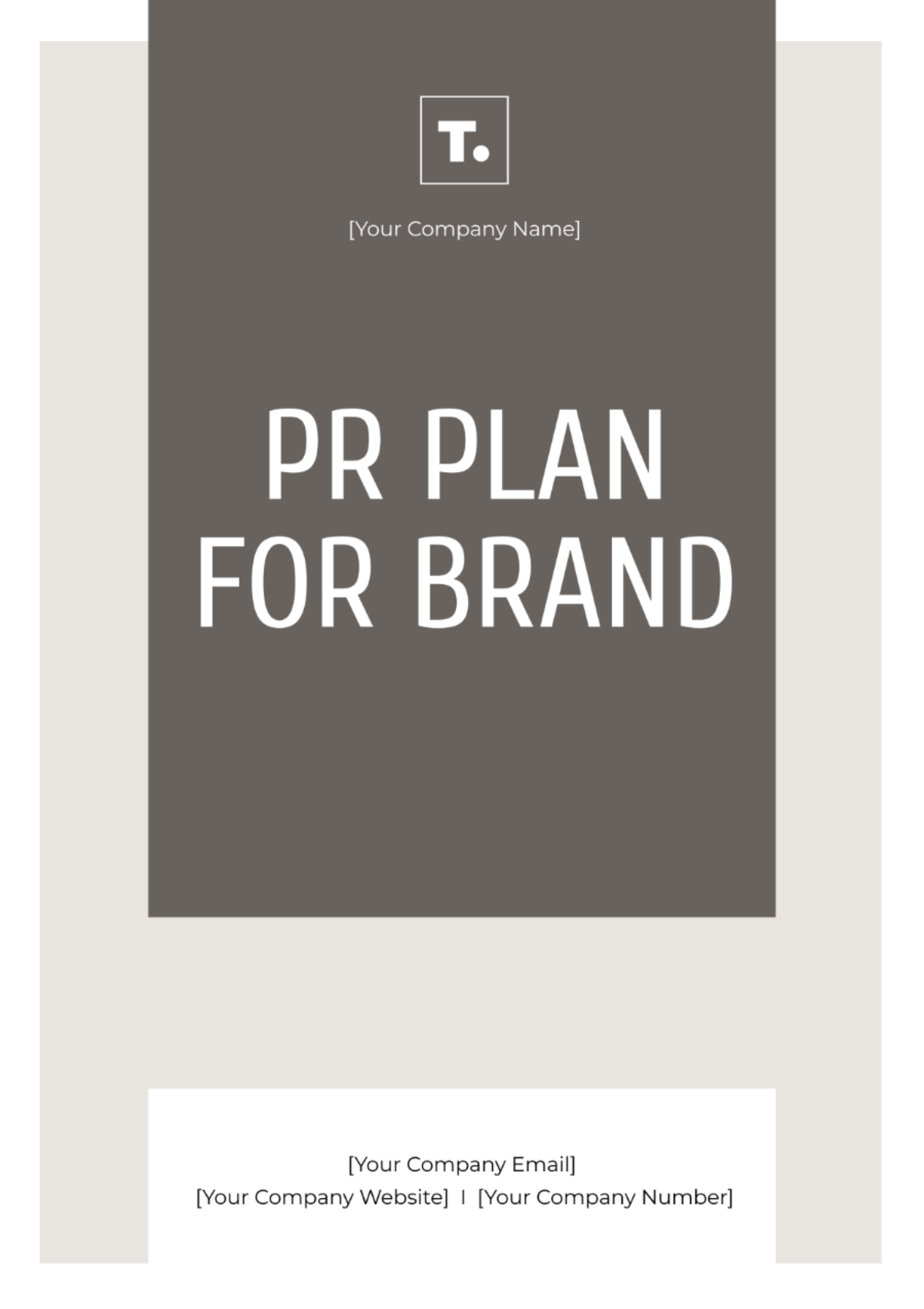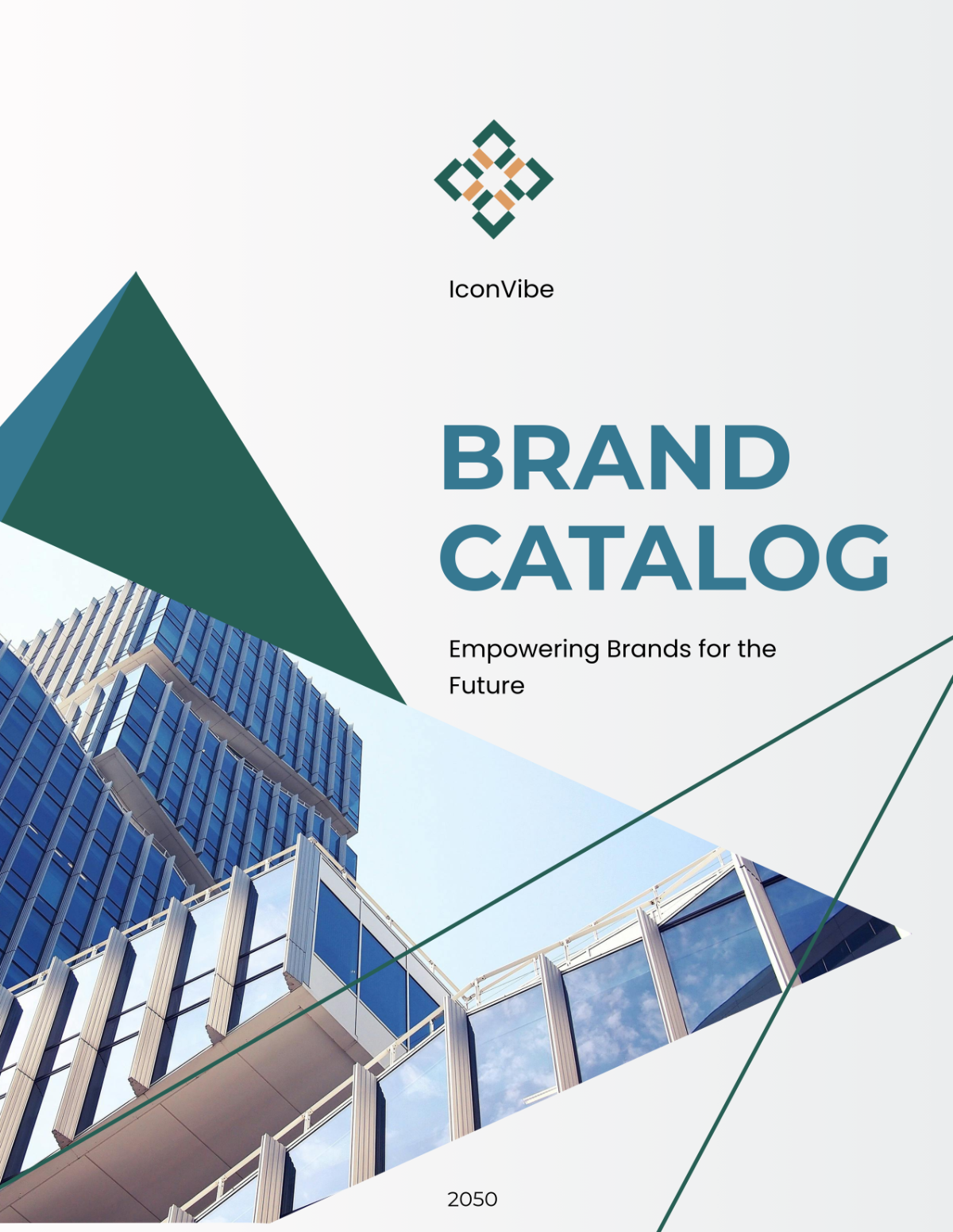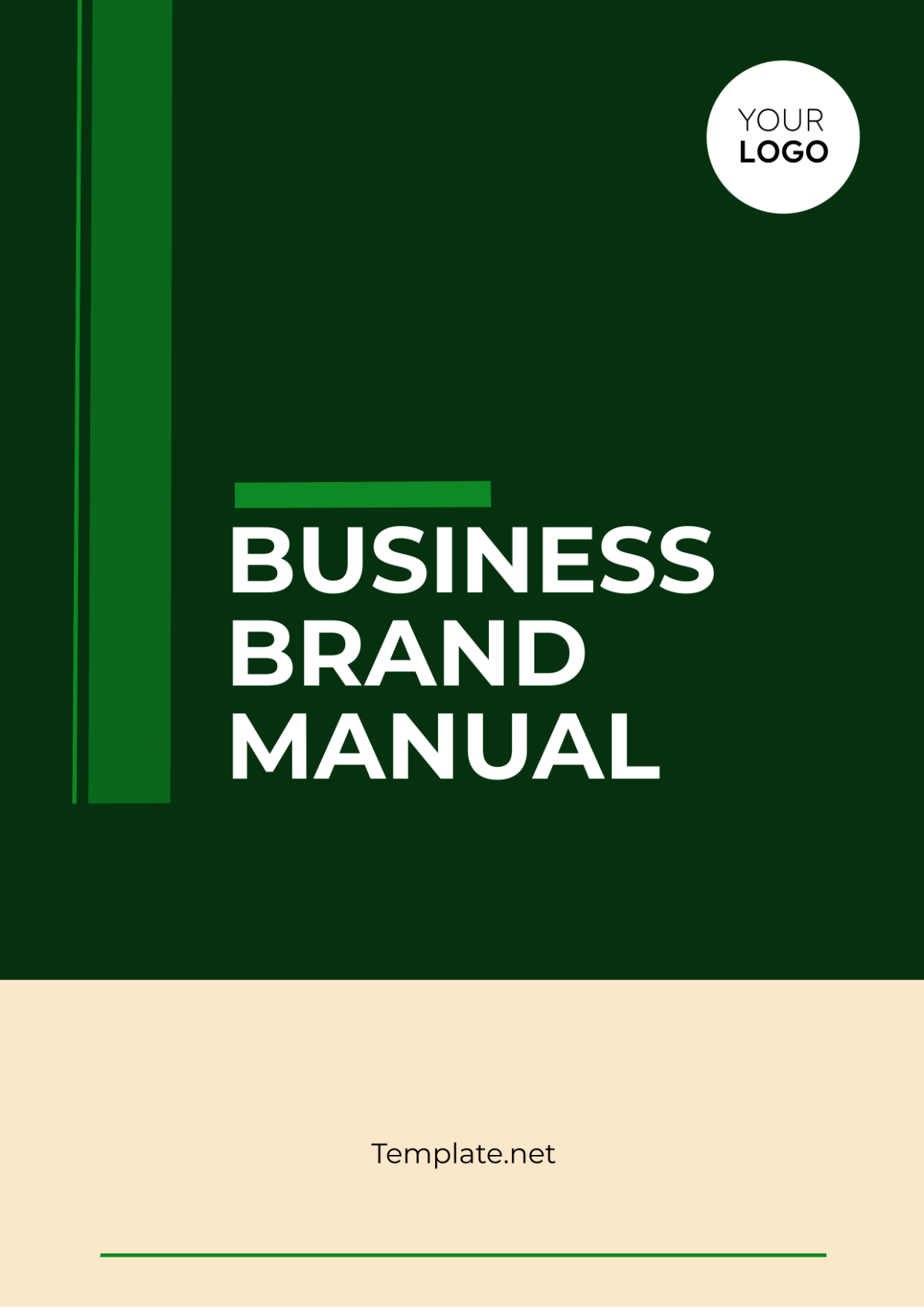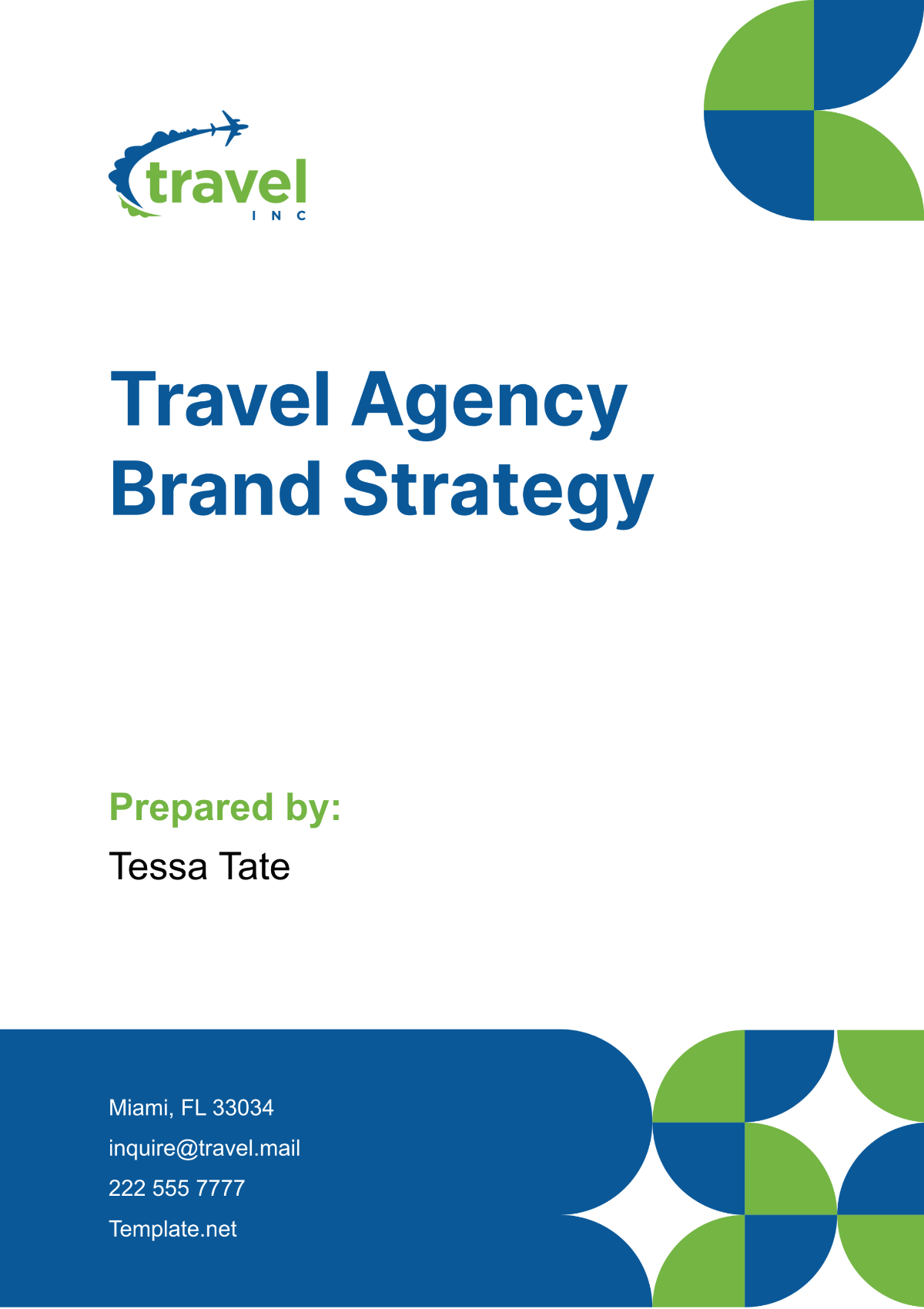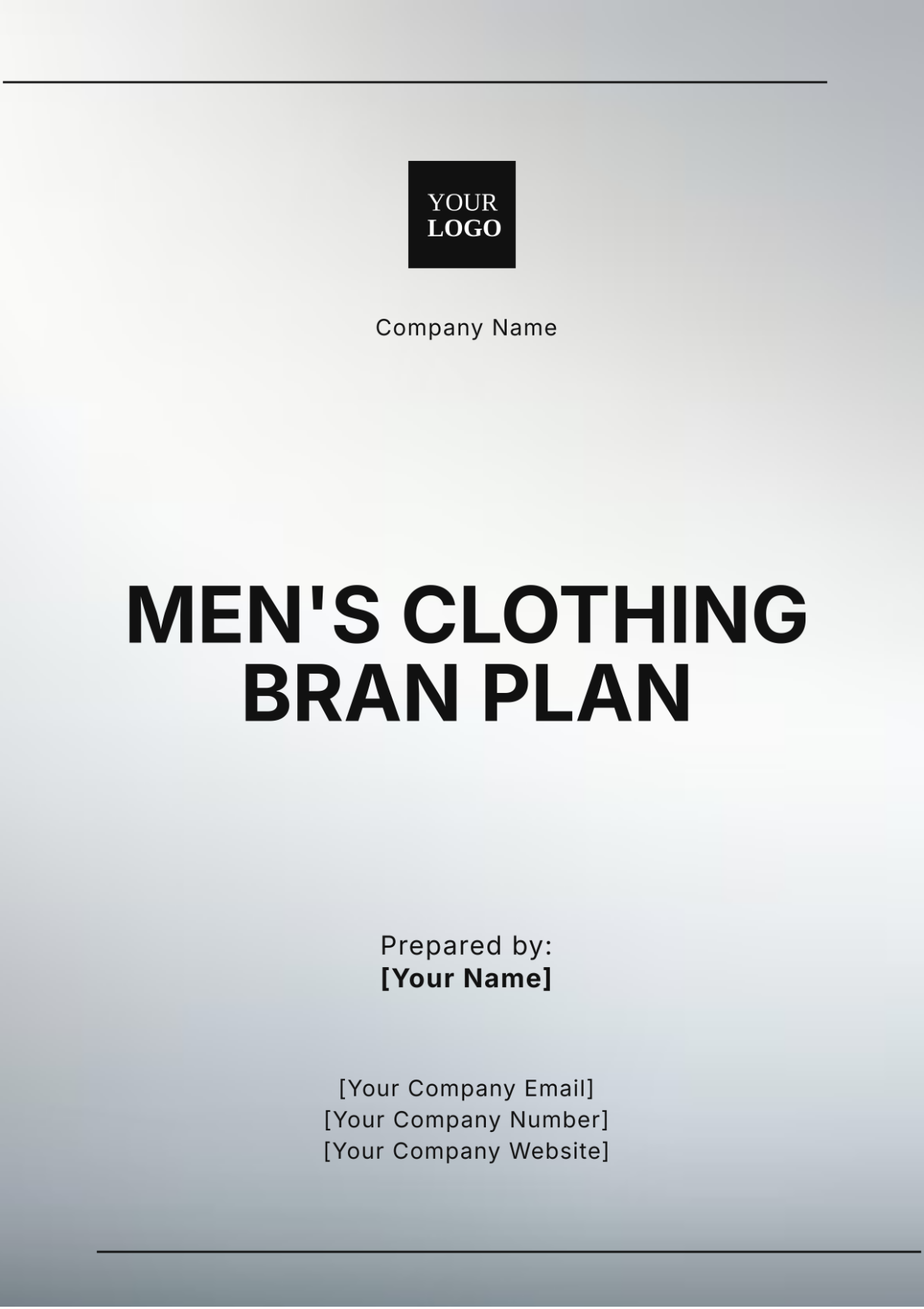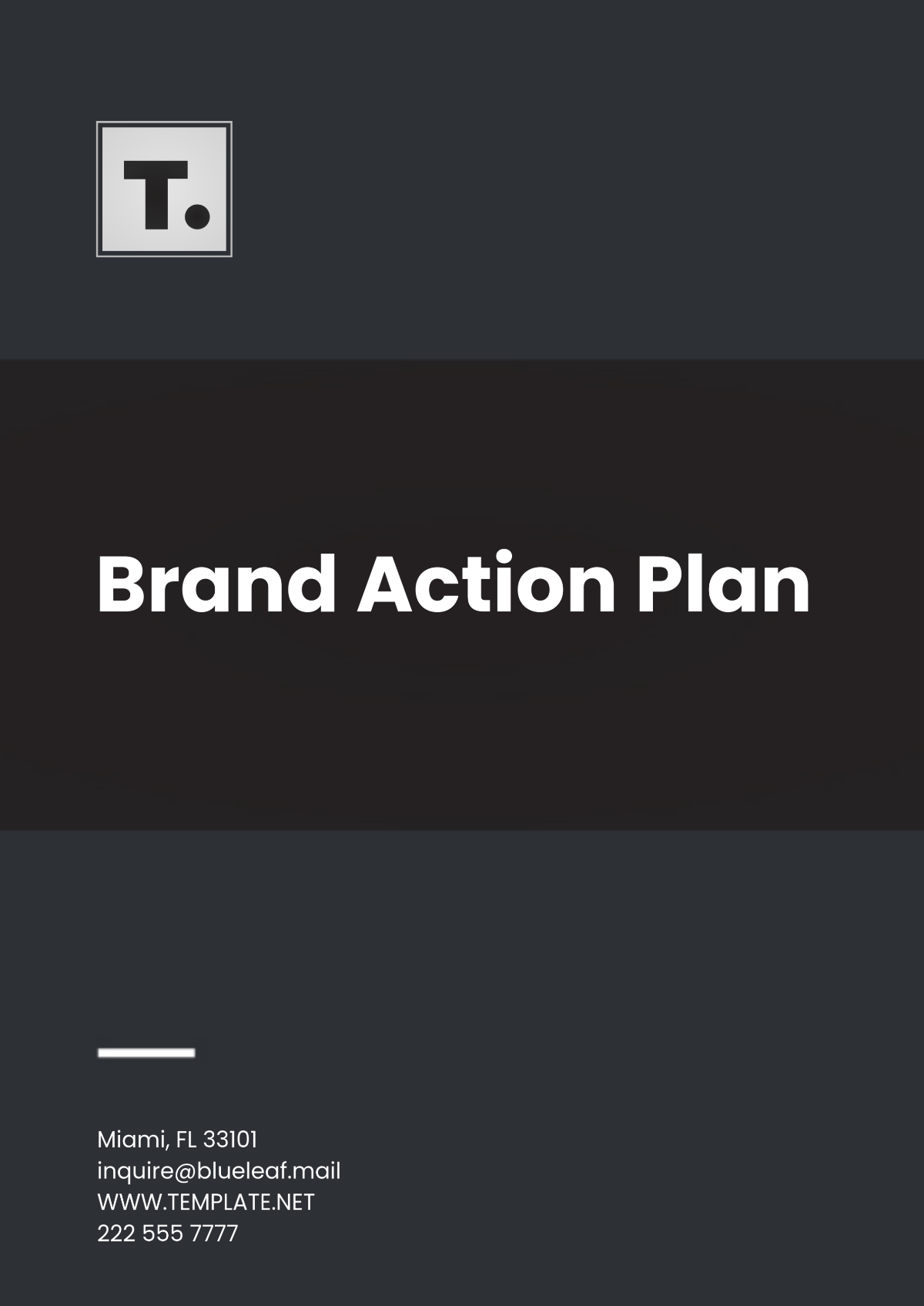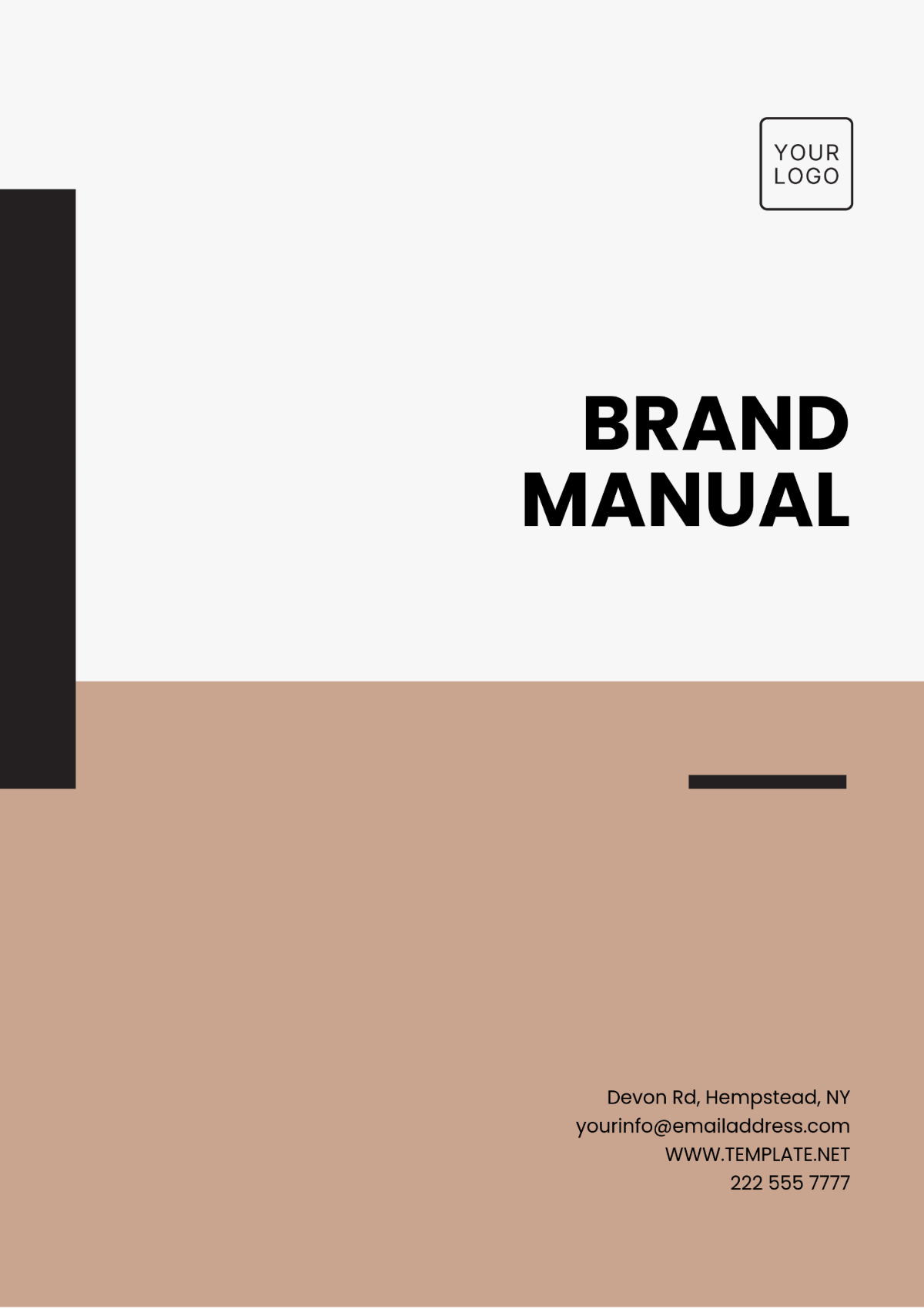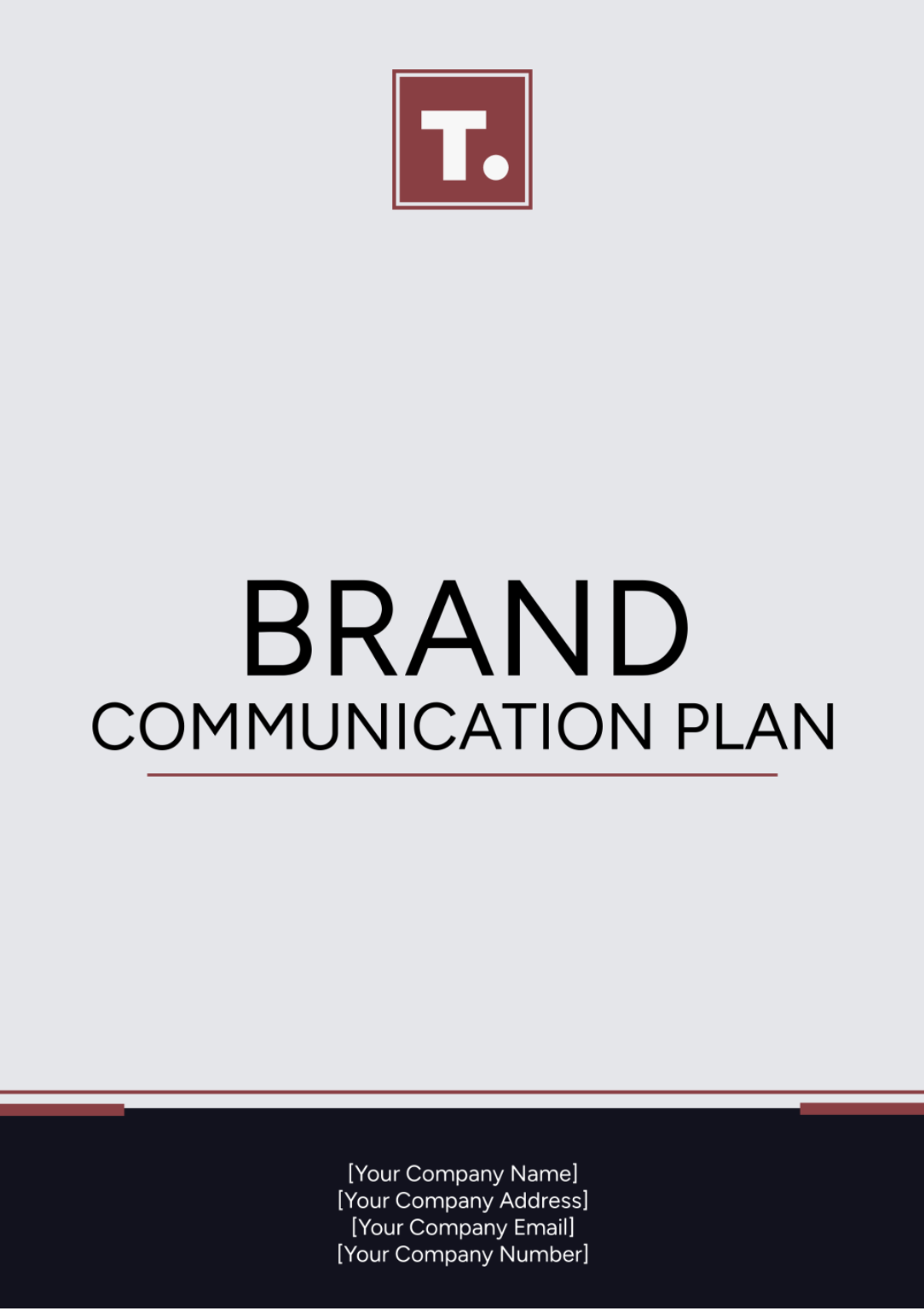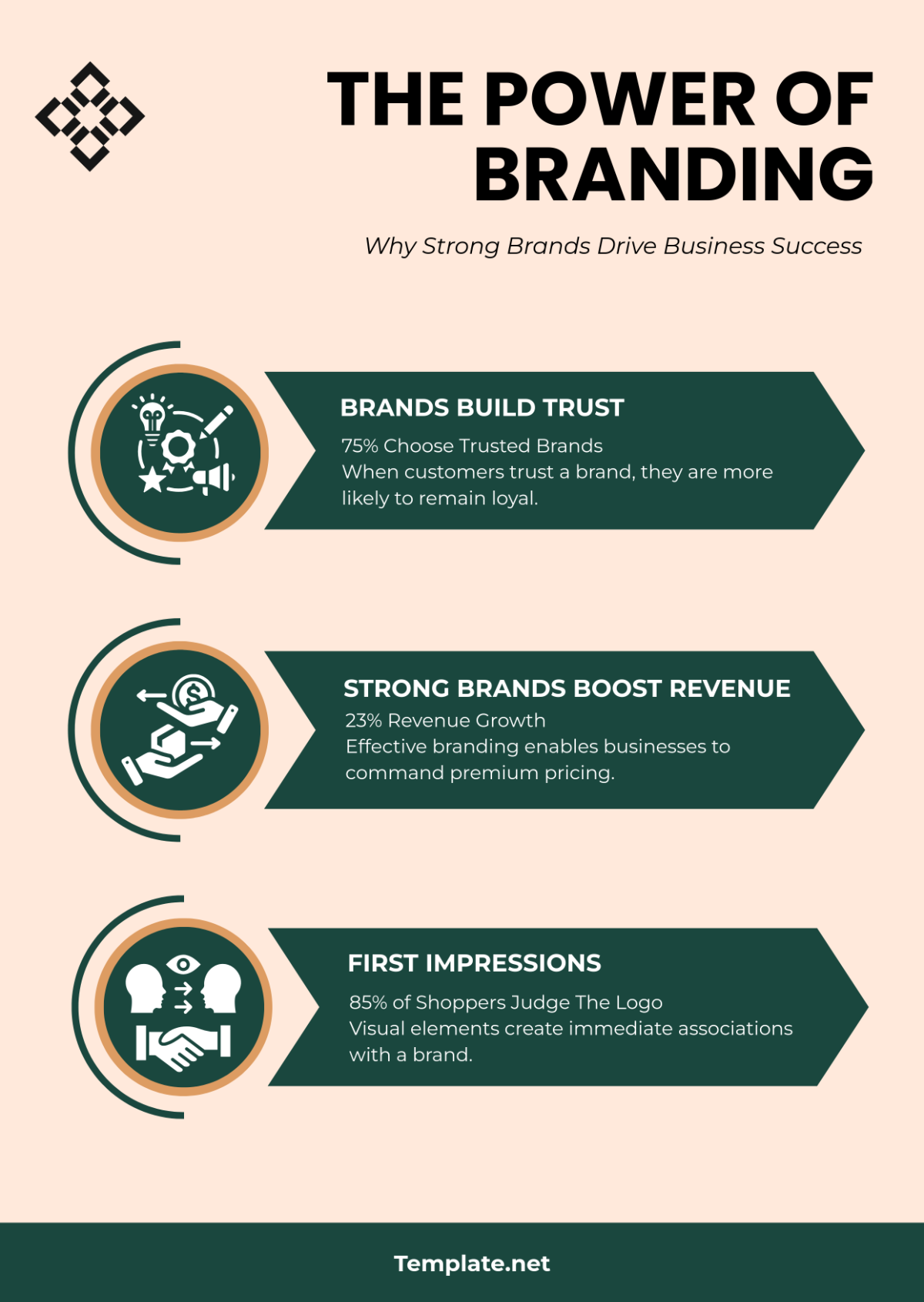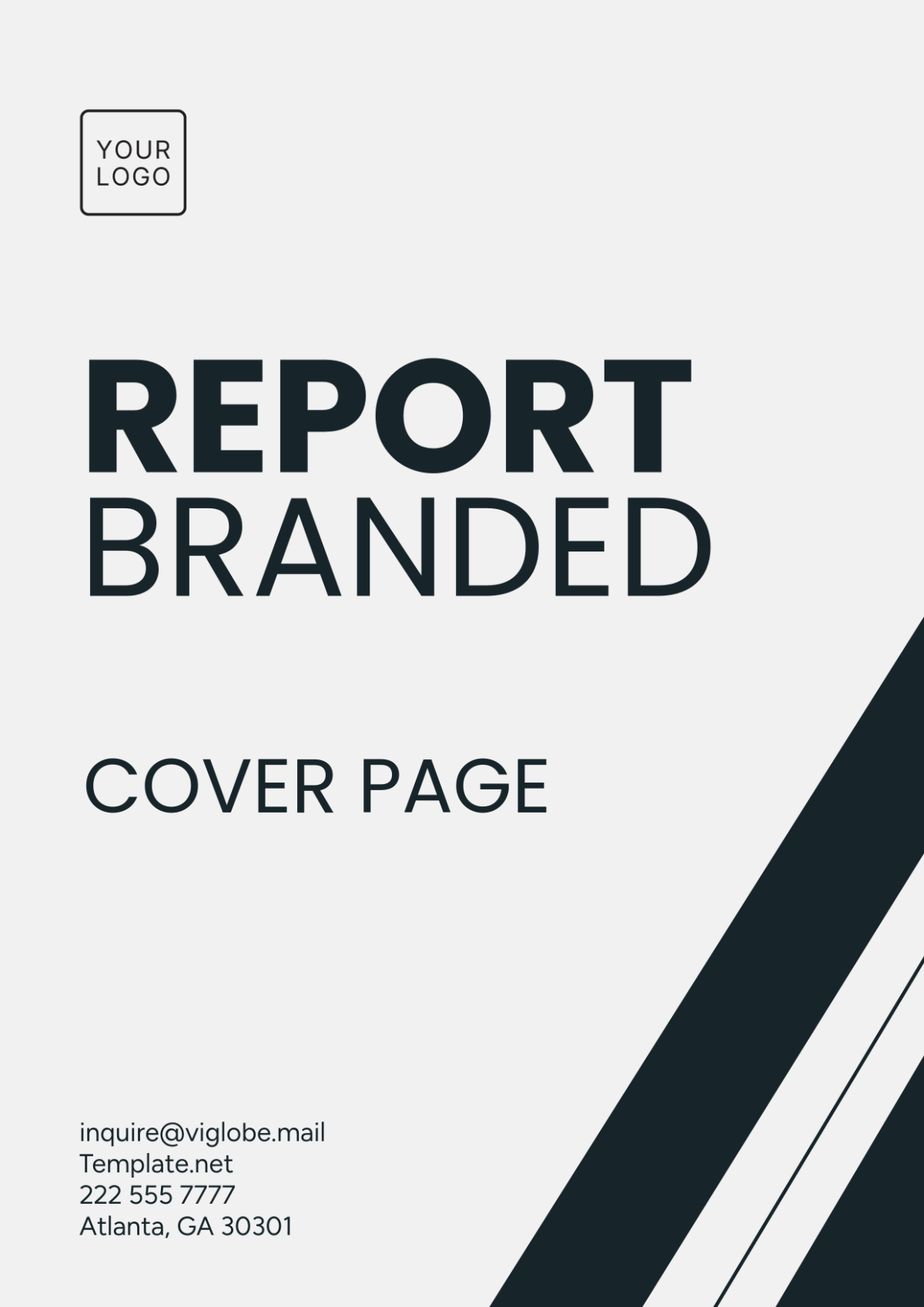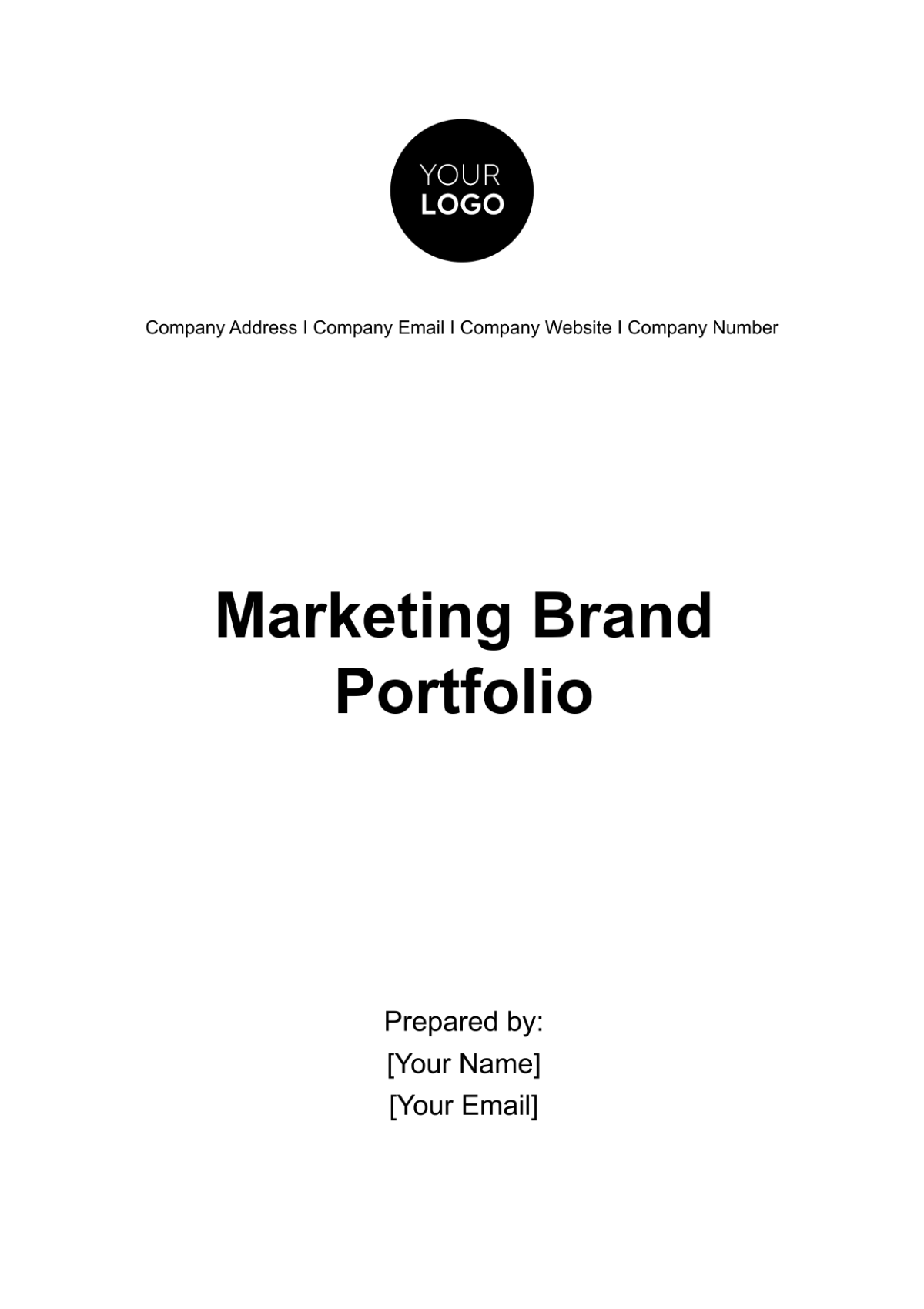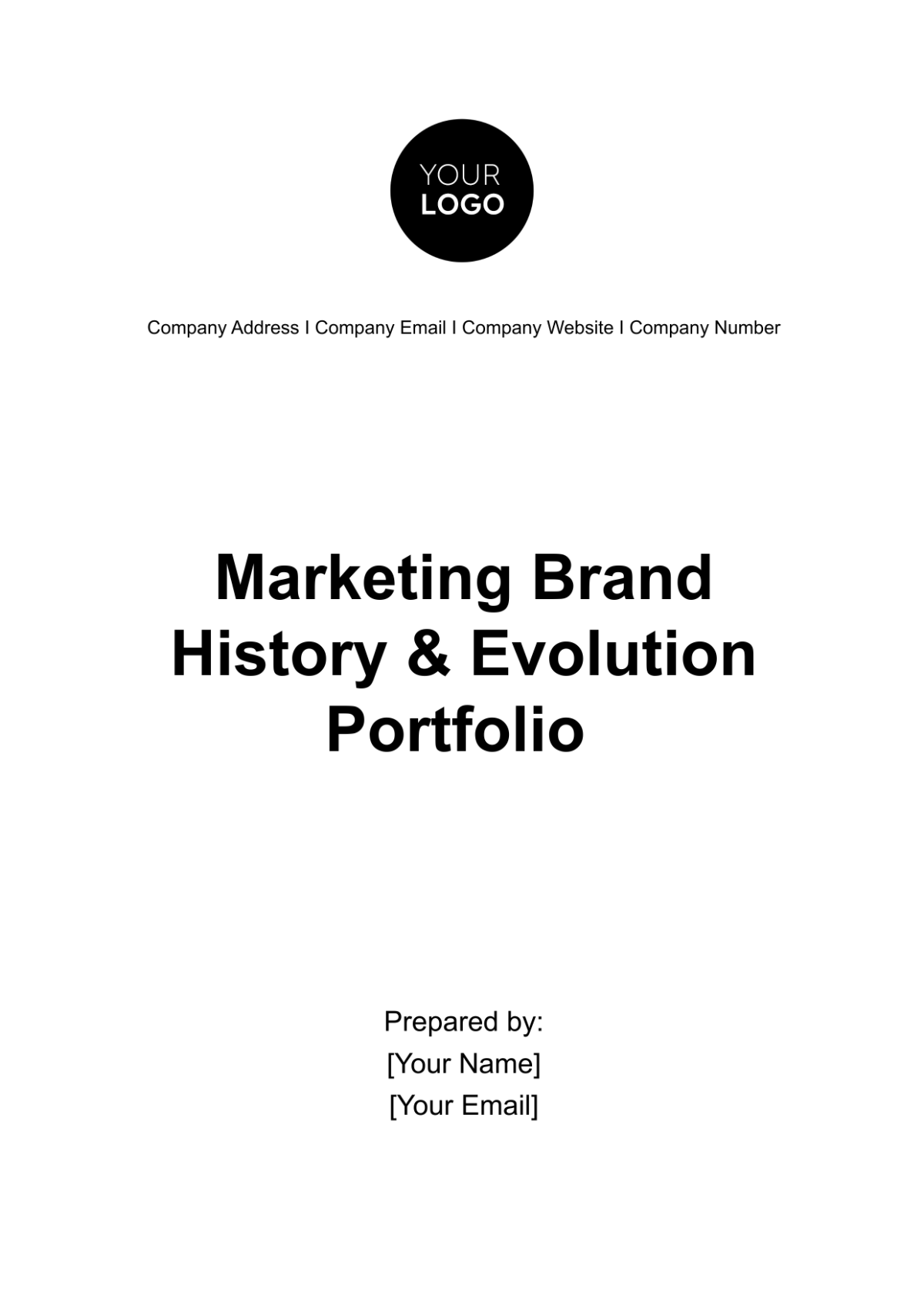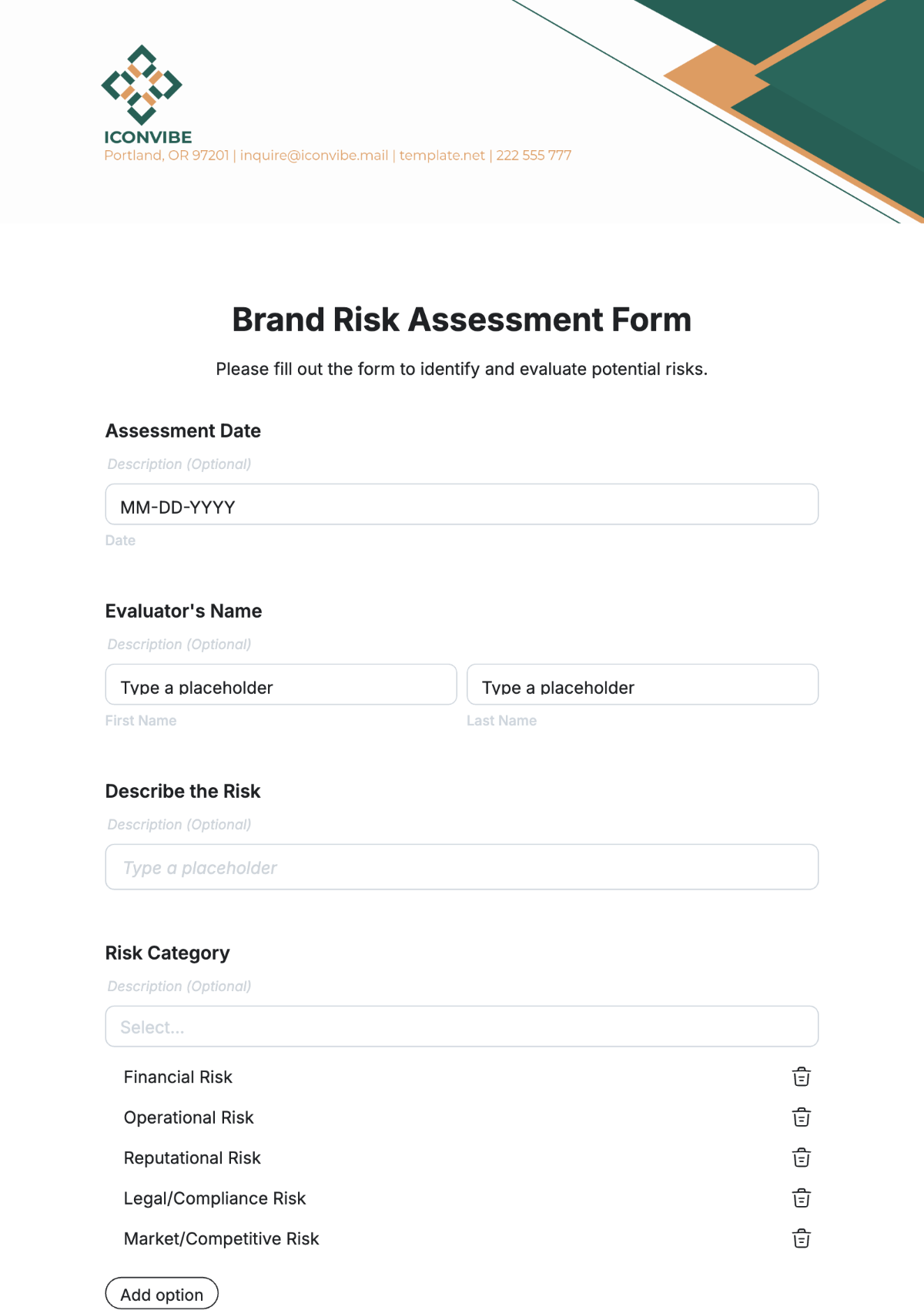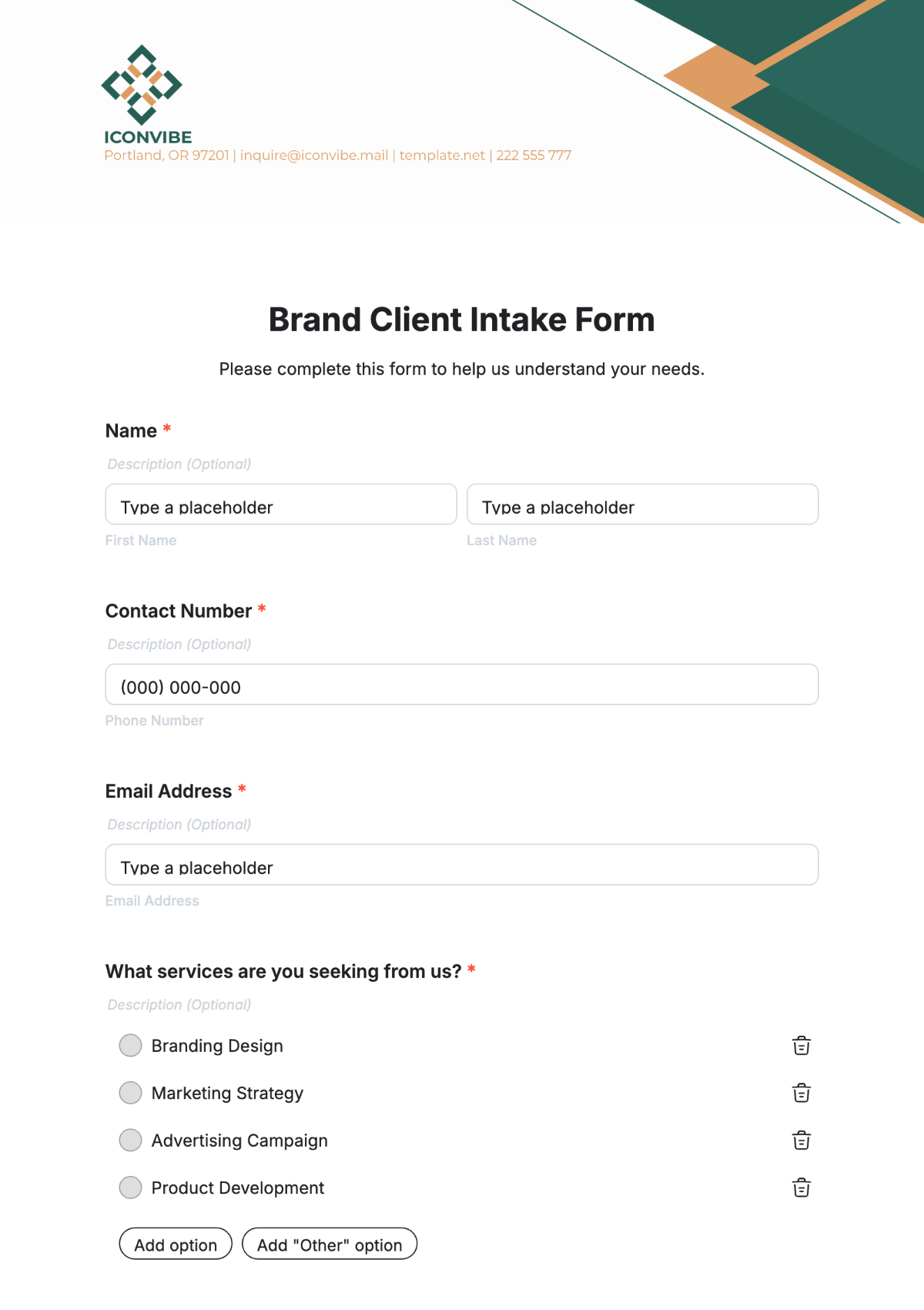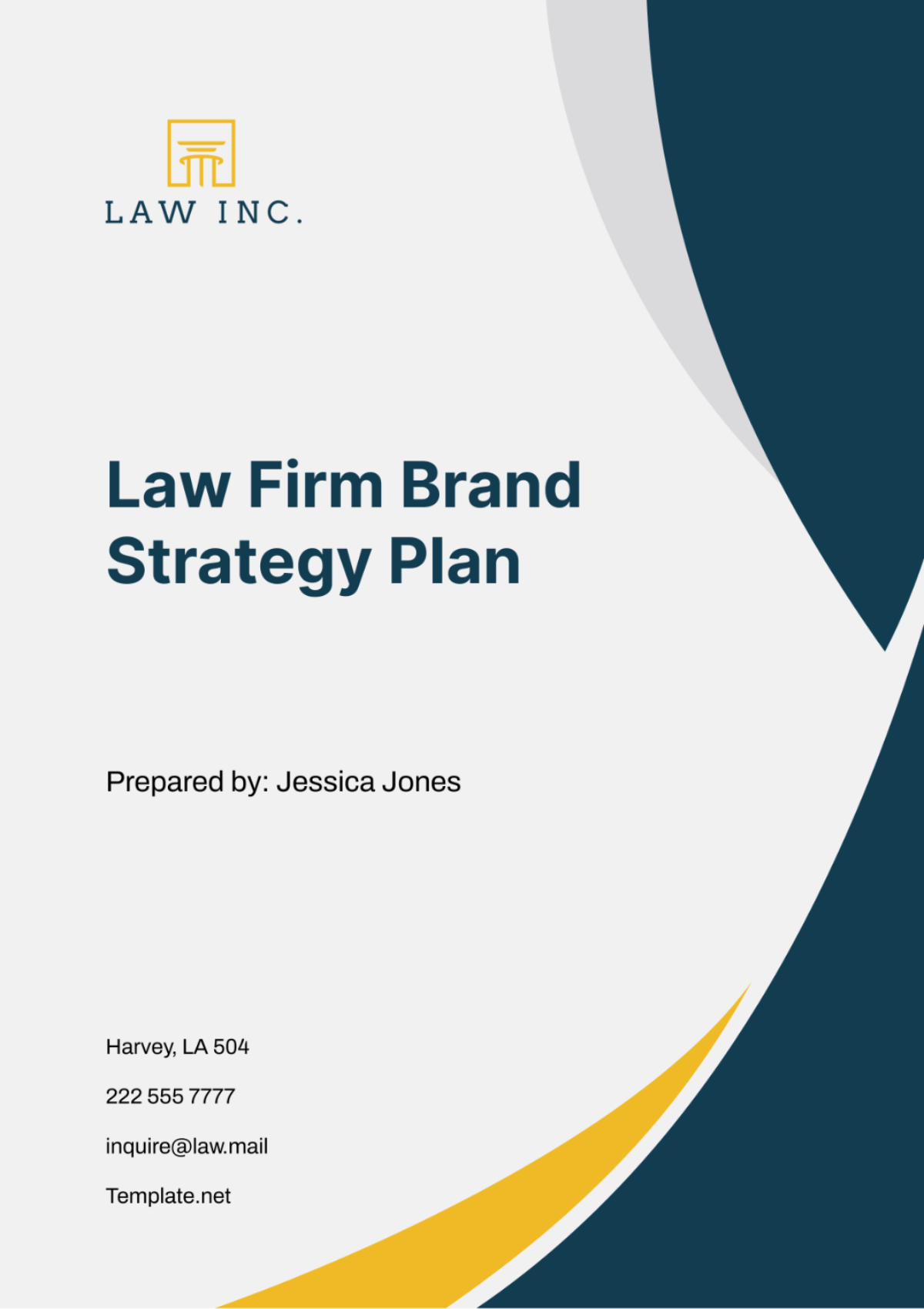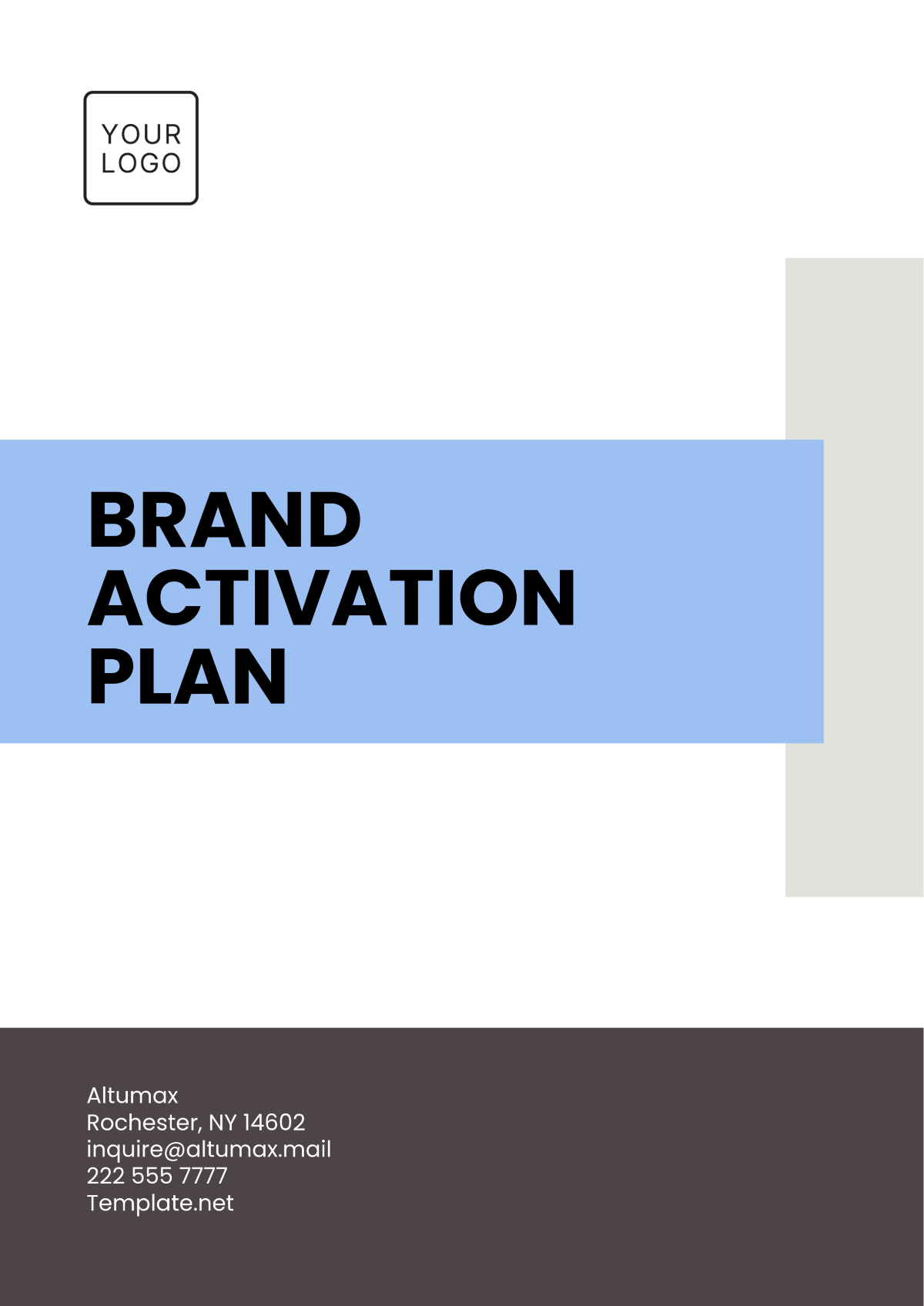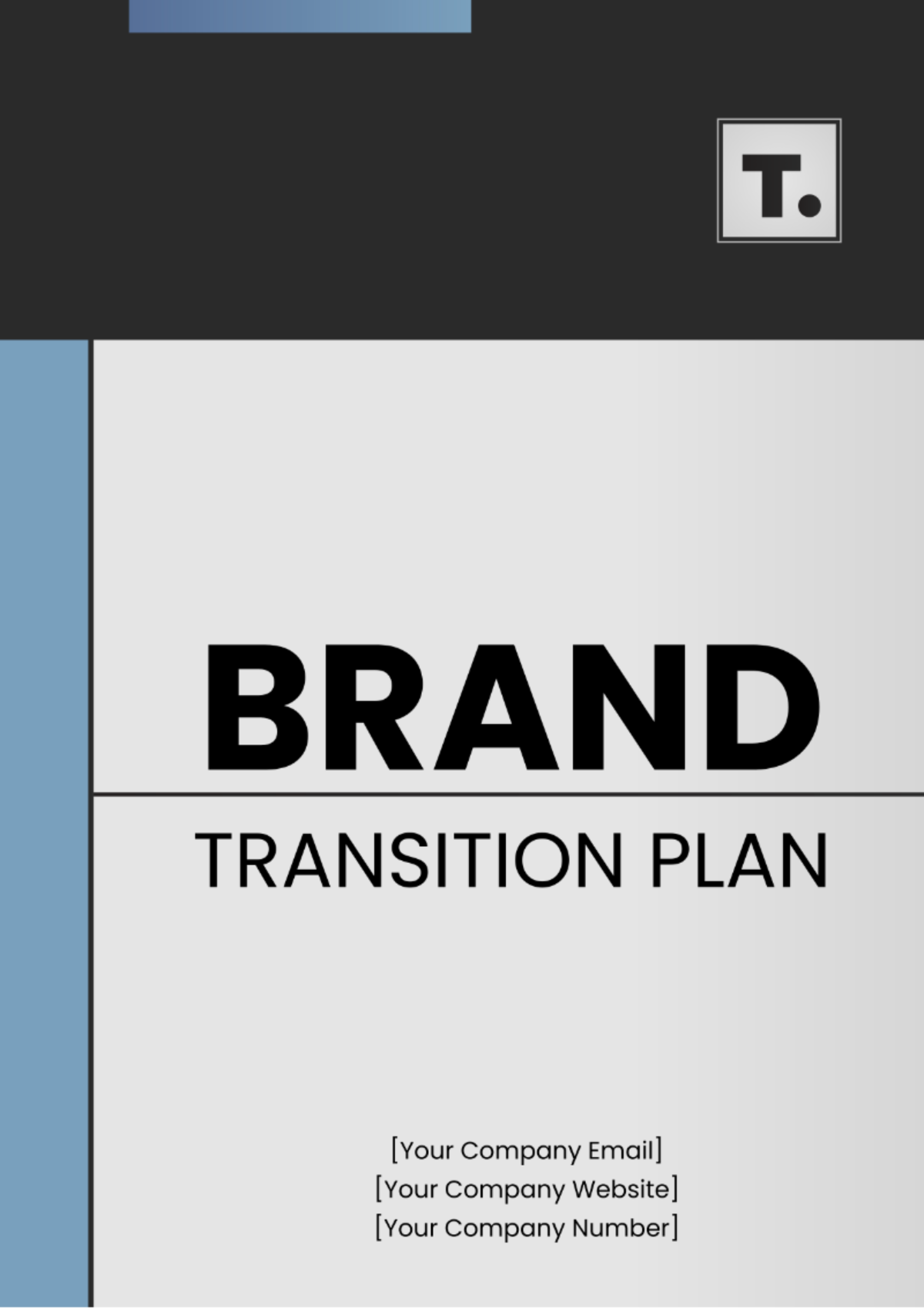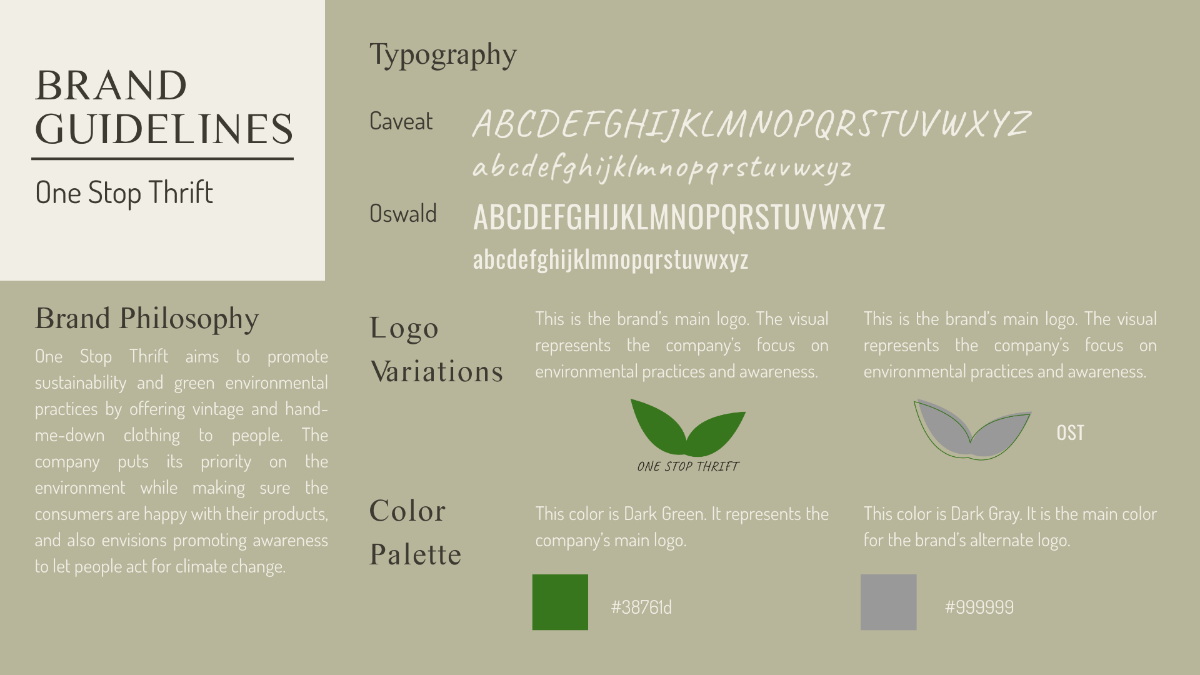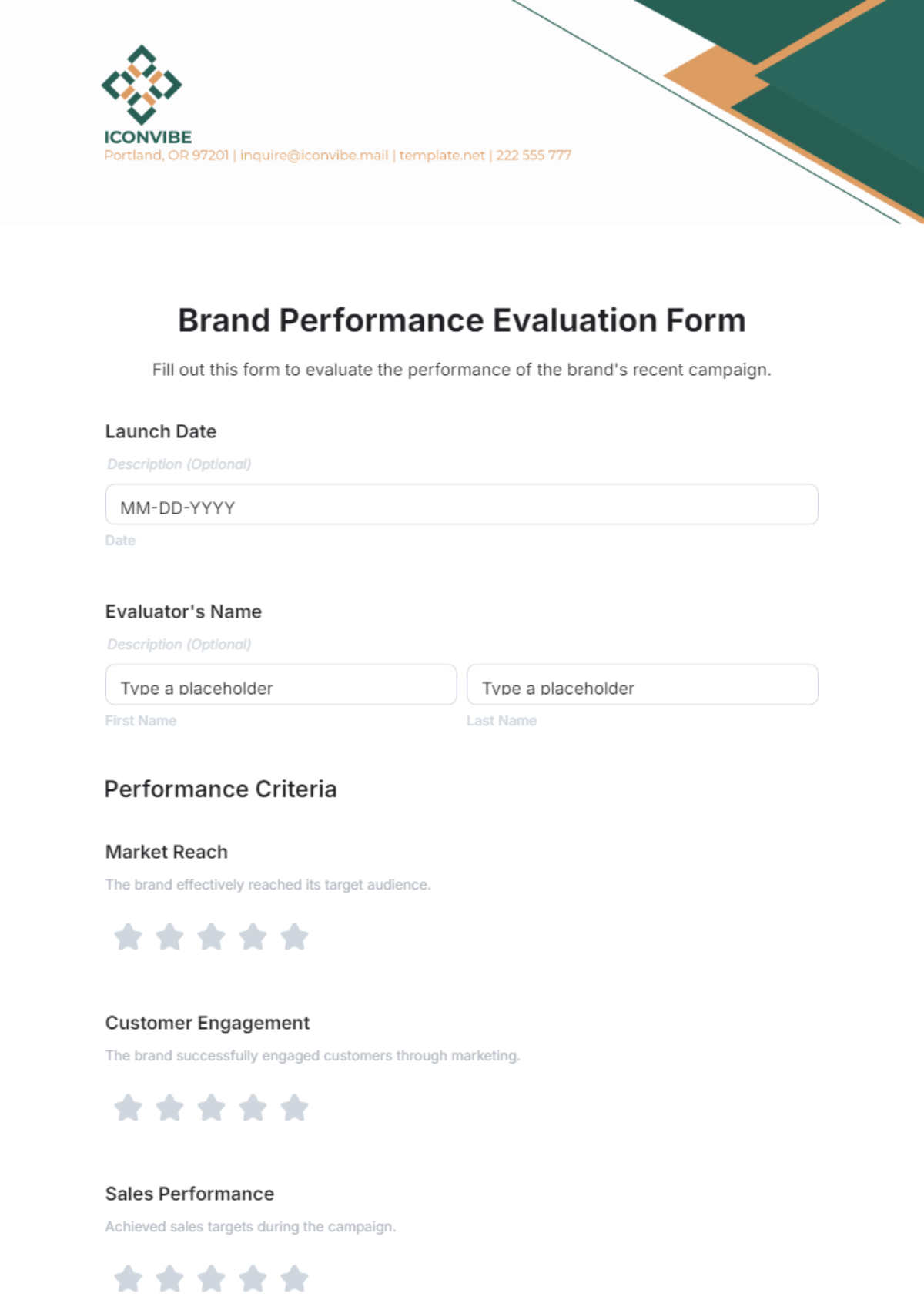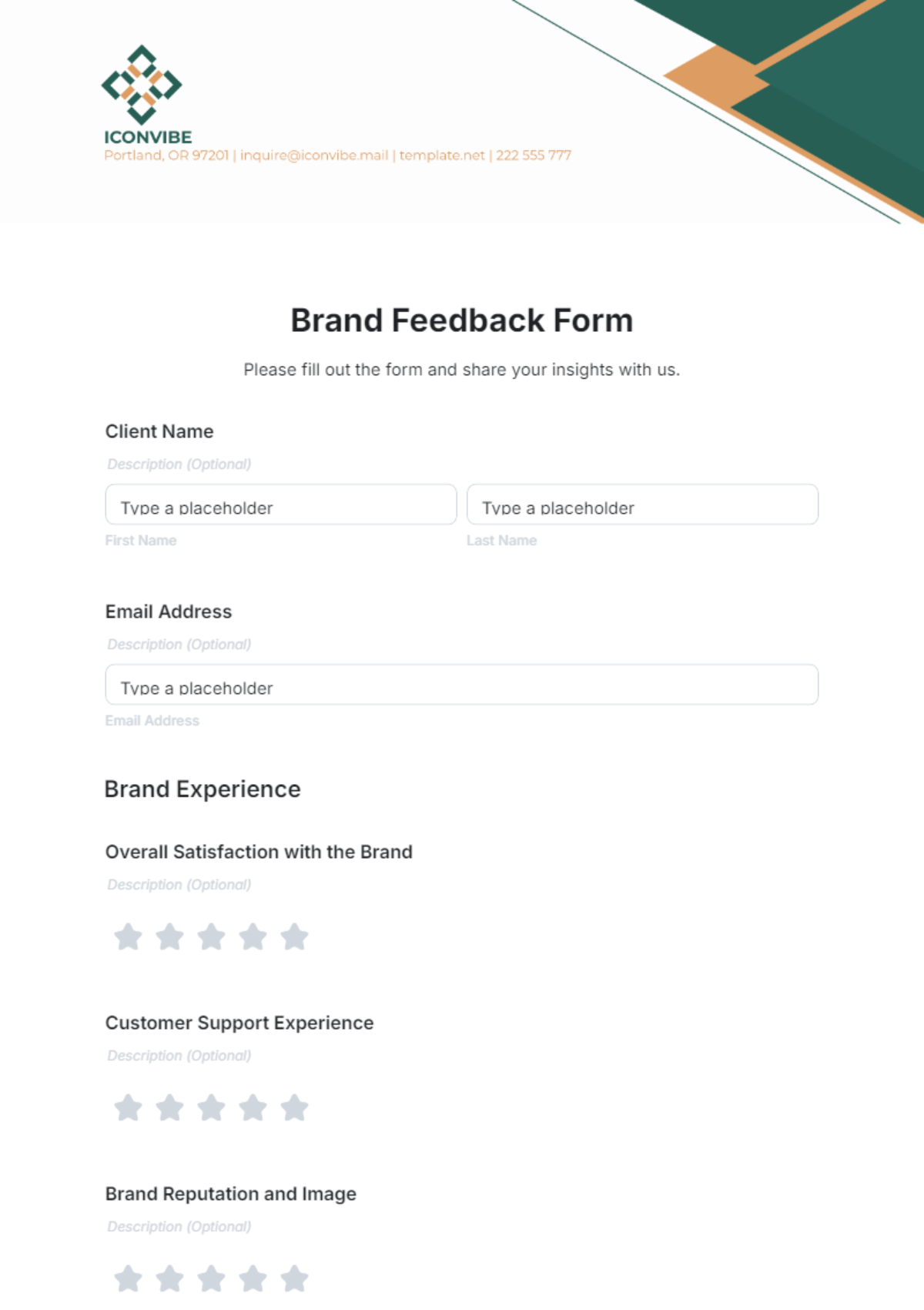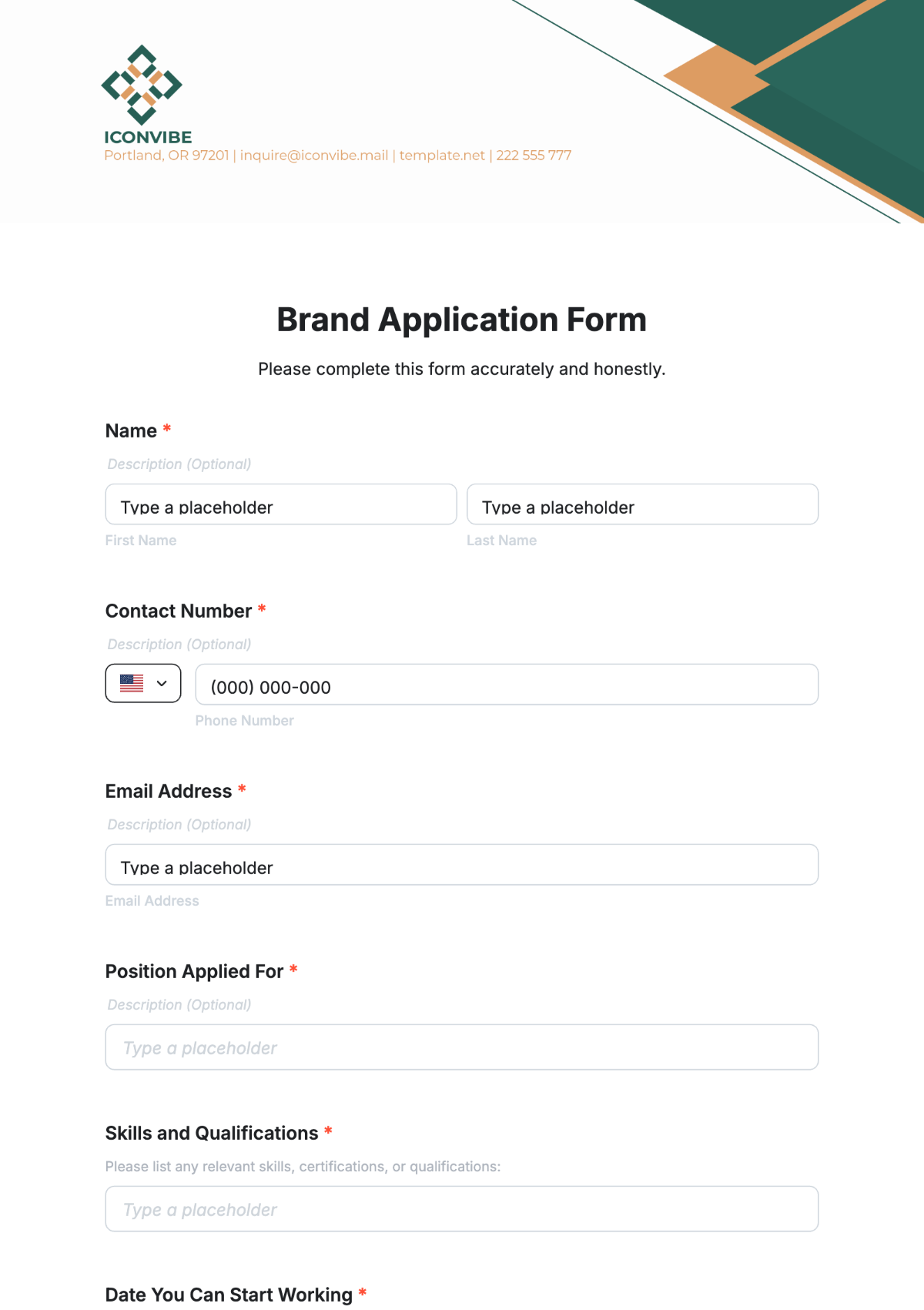Marketing Brand Quality Assurance
Policy & Procedure
Introduction
A. Purpose
The purpose of this Marketing Brand Quality Assurance Policy & Procedure is to establish a robust framework that guides all marketing activities conducted by [Your Company Name]. This framework ensures the consistent delivery of high-quality marketing materials that resonate with our target audience while upholding our brand's integrity. It outlines the steps and standards necessary to maintain the quality and accuracy of our marketing efforts.
At its core, this policy is designed to prevent any deviations from our brand guidelines and legal standards. It also serves as a reference point for all stakeholders involved in marketing campaigns, providing clear direction on maintaining brand consistency and achieving marketing excellence.
B. Scope
The scope of this policy and procedure encompasses all aspects of marketing activities within [Your Company Name]. This includes, but is not limited to, brand strategy development, content creation, campaign execution, and data analysis. It applies to all marketing channels, both digital and traditional, used by our organization to reach our target audience.
In essence, this policy applies to every team member, contractor, or partner involved in marketing efforts. Its reach extends from the initial stages of conceiving a marketing strategy to the final steps of evaluating the campaign's effectiveness. By setting clear boundaries and responsibilities, this scope ensures that the policy's principles are consistently applied throughout the organization.
Quality Assurance Principles
A. Commitment to Quality
[Your Company Name] holds a firm commitment to delivering marketing materials that not only meet industry standards but also exceed the expectations of our audience. We recognize that the quality of our marketing efforts directly reflects on our brand's reputation, and therefore, we dedicate ourselves to maintaining the highest standards.
B. Continuous Improvement
In today's dynamic business landscape, complacency is not an option. To ensure our marketing materials remain relevant and effective, we embrace the concept of continuous improvement. This means that we not only strive to meet existing standards but actively seek opportunities to enhance our marketing efforts.
C. Compliance with Standards
Our commitment to quality extends to compliance with industry standards, legal regulations, and our own brand guidelines. We understand that adherence to these standards is not negotiable, as it ensures consistency, transparency, and legal compliance in our marketing efforts.
Responsibilities
A. Management
Responsibility | Description |
Setting Strategy | Top management is responsible for setting the overall marketing strategy. |
Resource Allocation | Allocation of resources for marketing campaigns is a key management role. |
Leadership | Providing leadership in maintaining brand consistency is paramount. |
B. Marketing Team
Responsibility | Description |
Content Creation | Creating engaging and on-brand marketing content is essential. |
Adherence to Guidelines | Ensuring marketing materials align with brand guidelines is key. |
Campaign Execution | Executing marketing campaigns effectively is a core responsibility. |
C. Quality Assurance Team
Responsibility | Description |
Monitoring and Evaluation | Regularly monitoring and evaluating marketing materials is imperative. |
Compliance Verification | Ensuring compliance with brand guidelines and standards is a key role. |
Recommendations | Providing recommendations for improvement based on evaluations is crucial. |
Quality Assurance Process
A. Brand Strategy Development
In the process of developing our brand strategy, we follow a systematic approach that includes data analysis, target audience identification, and messaging optimization. Here's an overview of this process:
Data Analysis: We gather data related to market trends, consumer behavior, and competitor analysis. This data helps us make informed decisions about our brand's positioning and messaging.
Target Audience Identification: Understanding our target audience is crucial. We create detailed buyer personas to tailor our marketing strategies effectively.
Messaging Optimization: We refine our brand messaging to resonate with our target audience, ensuring it reflects our brand's values and differentiators.
B. Content Creation and Review
The content creation and review process is critical to maintaining the quality of our marketing materials. Here's an outline of the steps involved:
Content Creation: Our marketing team creates content that aligns with our brand guidelines and the strategic messaging developed in the previous step.
Editorial Review: All marketing content goes through an editorial review process to ensure accuracy, grammar, and adherence to brand voice.
Design Review: Visual elements, including images and graphics, are reviewed to ensure they align with our brand's visual identity.
C. Campaign Execution
Campaign execution involves a series of steps to bring our marketing materials to our target audience effectively. Here's an overview:
Content Dissemination: Marketing materials are disseminated through various channels, including social media, email marketing, and advertising.
Audience Targeting: We use data-driven insights to target our marketing campaigns toward the right audience segments.
Monitoring and Optimization: Throughout the campaign, we monitor performance metrics and make real-time optimizations to maximize effectiveness.
D. Data Analysis and Reporting
Data analysis and reporting are integral to measuring the success of our marketing campaigns. Here's how it works:
Data Collection: We collect data on key performance indicators (KPIs) such as click-through rates, conversion rates, and audience engagement.
Data Analysis: Our team analyzes the data to evaluate the campaign's effectiveness and identify areas for improvement.
Reporting: Comprehensive reports are generated and shared with relevant stakeholders to inform decision-making and future marketing strategies.
Campaign Effectiveness Over Time
Campaign Channel Performance
Brand Compliance
A. Brand Identity
Our brand identity is a vital component of our marketing efforts. It comprises several elements, and strict adherence to these elements is necessary for maintaining brand consistency. Below, we detail the key components of our brand identity:
Logo: Our logo is the visual representation of our brand. It must be used in accordance with our brand guidelines, with no alterations to its design, color, or proportions.
Colors: The specific color palette associated with our brand is essential for visual consistency. All marketing materials must use these colors consistently to reinforce our brand identity.
Fonts: Our brand guidelines specify the fonts to be used in marketing materials. These fonts must be adhered to for written content, ensuring a cohesive visual experience.
Visual Style: Our brand has a distinct visual style, which includes the use of images, graphics, and design elements. This visual style must be maintained to create a unified brand image.
B. Messaging Consistency
Consistency in messaging is critical to ensuring that our brand's voice and values are accurately conveyed to our audience. It involves the use of consistent language, tone, and style across all marketing materials. To achieve messaging consistency:
C. Legal and Regulatory Compliance
Our marketing materials must adhere to all relevant legal and regulatory requirements in our industry. This includes, but is not limited to:
Compliance with advertising standards and regulations.
Ensuring that all claims made in marketing materials are truthful and substantiated.
Respecting copyright and intellectual property rights when using third-party content.
Our legal and compliance team plays a crucial role in ensuring that all marketing materials meet these requirements.
Training and Development
A. Training Needs Assessment
A Training Needs Assessment is a foundational step in ensuring that our marketing and quality assurance teams have the necessary skills and knowledge to meet their responsibilities effectively. This assessment involves:
Identifying skill gaps and knowledge deficiencies within the teams.
Evaluating the changing landscape of marketing trends and technologies.
Gathering feedback from team members regarding their training needs.
Based on the assessment, a tailored training plan is developed to address identified gaps and align with our quality assurance goals.
B. Training Programs
Training programs are an essential part of enhancing the capabilities of our marketing and quality assurance teams. These programs are designed to cover various aspects, including:
Brand Guidelines: Ensuring that team members fully understand and can apply our brand guidelines to their work.
Regulatory Compliance: Providing training on legal and regulatory requirements relevant to marketing activities in our industry.
Digital Marketing Tools: Equipping team members with the knowledge and skills to effectively utilize digital marketing tools and platforms.
Training programs may be conducted in-house or may involve external resources, depending on the complexity and specific needs of the training.
C. Continuous Learning
In the dynamic field of marketing, continuous learning is paramount. It fosters a culture of adaptation, innovation, and staying ahead of industry trends. Our commitment to continuous learning involves:
Encouraging team members to stay updated with the latest marketing trends and best practices.
Providing opportunities for attending conferences, workshops, and online courses.
Promoting the sharing of knowledge and insights within the organization through regular knowledge-sharing sessions.
Continuous learning ensures that our teams remain agile and can adapt to changing market dynamics and emerging technologies effectively.
Documentation and Records
A. Document Control
Document control is essential to maintain the accuracy and relevancy of our marketing-related documents and policies. This involves:
Regularly reviewing and updating marketing policies and procedures to reflect changes in our marketing strategies or industry regulations.
Ensuring that the most current versions of documents are accessible to relevant team members.
A clear and organized document control system enhances transparency and accountability in managing our marketing policies.
B. Records Retention
Records retention plays a vital role in preserving the history and integrity of our marketing activities. This includes:
Establishing clear guidelines for the retention of marketing records, including campaign materials and reports.
Ensuring compliance with legal requirements regarding record retention in our industry.
Effective records retention allows us to access historical data and information when needed, whether for compliance, auditing, or historical analysis.
C. Accessibility and Security
While ensuring the accessibility of marketing documentation to relevant team members, we also prioritize document security. This involves:
Implementing secure storage solutions for sensitive marketing materials.
Restricting access to confidential documents based on the principle of least privilege.
Regularly monitoring document access and usage to prevent unauthorized disclosure.
By balancing accessibility with security, we maintain the confidentiality and integrity of our marketing documentation.
Non-Conformance and Corrective Action
A. Identification of Non-Conformance
The identification of non-conformance is a crucial aspect of our quality assurance process. It involves:
Conducting regular audits and evaluations to detect any deviations from brand guidelines, legal requirements, or quality standards.
Encouraging team members to report any identified non-conformance promptly.
B. Corrective Action Plan
When non-conformance is identified, a corrective action plan is developed and implemented. This plan includes:
Root cause analysis to understand why the non-conformance occurred.
Clearly defined steps for correcting the issue, including revisions, retractions, or other necessary actions.
A timeline for implementing corrective measures.
C. Review and Verification
After corrective actions are taken, a review and verification process is initiated. This involves:
Assessing the effectiveness of the corrective actions to ensure that the non-conformance is rectified.
Documenting the outcomes of the review and any lessons learned.
Sharing the results with relevant stakeholders for transparency.
Review and Revision
A. Periodic Review
Our Marketing Brand Quality Assurance Policy & Procedure undergoes periodic reviews to ensure its relevance and effectiveness. Reviews are conducted:
Annually or as needed to incorporate changes in industry standards, regulations, or company strategies.
With input from relevant stakeholders, including the marketing team, quality assurance team, and management.
B. Revision Process
The revision process is structured and systematic. It involves:
Identifying the need for revisions based on the outcomes of periodic reviews or emerging issues.
Documenting proposed changes and obtaining necessary approvals from relevant stakeholders.
Ensuring that all team members are informed of and trained on the updated policies and procedures.
C. Approval and Documentation
Revised policies and procedures are subject to approval by [Your Company Name] management. All revisions are documented, and the updated version is communicated to all relevant parties.
For inquiries or further information related to our Marketing Brand Quality Assurance Policy & Procedure, please feel free to reach out to us:
[Your Name]
[Your Email]
[Your Company Name]
[Your Company Number]
[Your Company Email]
[Your Company Website]
[Your Company Social Media]
